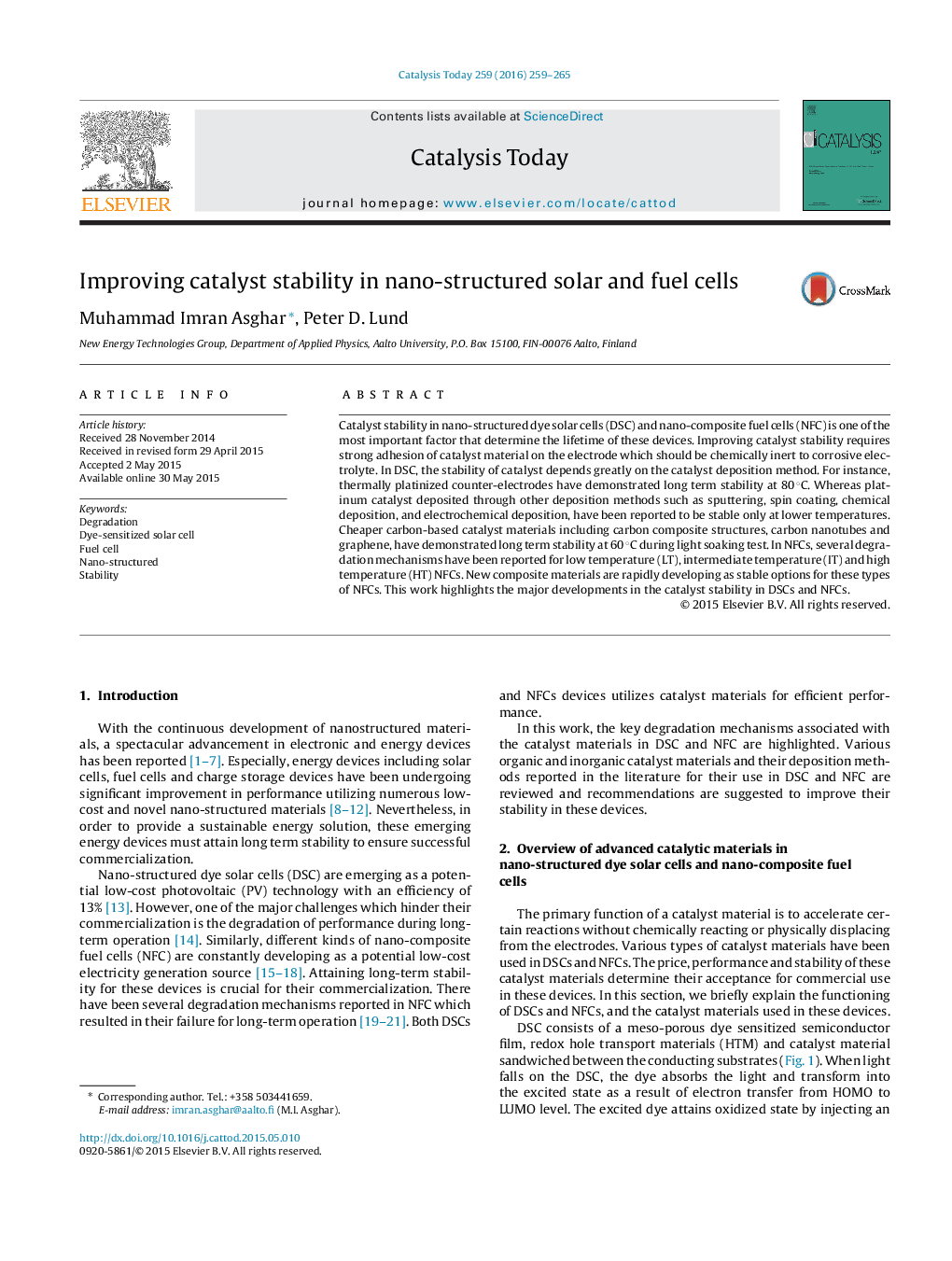| کد مقاله | کد نشریه | سال انتشار | مقاله انگلیسی | نسخه تمام متن |
|---|---|---|---|---|
| 53484 | 46972 | 2016 | 7 صفحه PDF | دانلود رایگان |
Catalyst stability in nano-structured dye solar cells (DSC) and nano-composite fuel cells (NFC) is one of the most important factor that determine the lifetime of these devices. Improving catalyst stability requires strong adhesion of catalyst material on the electrode which should be chemically inert to corrosive electrolyte. In DSC, the stability of catalyst depends greatly on the catalyst deposition method. For instance, thermally platinized counter-electrodes have demonstrated long term stability at 80 °C. Whereas platinum catalyst deposited through other deposition methods such as sputtering, spin coating, chemical deposition, and electrochemical deposition, have been reported to be stable only at lower temperatures. Cheaper carbon-based catalyst materials including carbon composite structures, carbon nanotubes and graphene, have demonstrated long term stability at 60 °C during light soaking test. In NFCs, several degradation mechanisms have been reported for low temperature (LT), intermediate temperature (IT) and high temperature (HT) NFCs. New composite materials are rapidly developing as stable options for these types of NFCs. This work highlights the major developments in the catalyst stability in DSCs and NFCs.
Figure optionsDownload high-quality image (235 K)Download as PowerPoint slide
Journal: Catalysis Today - Volume 259, Part 2, 1 January 2016, Pages 259–265
